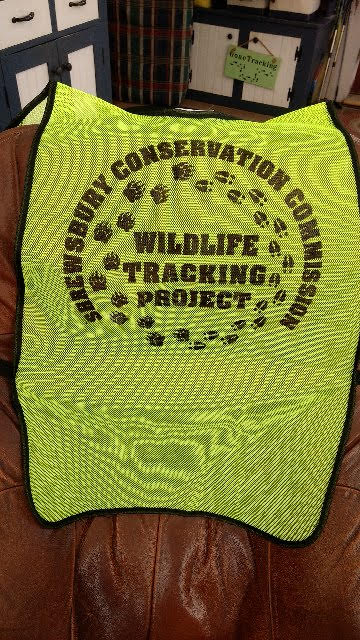Shrewsbury Wildlife Road Cossing Project
The purpose of this project by the Shrewsbury Conservation Commission (SCC) is to identify important wildlife road crossings in our town, and educate townspeople about the number and variety of animals whose travel corridors intersect our roadways. This will be with an eye towards convincing landowners to conserve/protect these areas and understand the importance of conserving forested land on each side of the roadway. The ultimate goal is to increase safety for the wildlife that must venture across town highways to access food, find mates, migrate, patrol territories, and flee danger, while ultimately conserving habitat that is conducive to this.
We received a grant from the AVCC for two game cameras to help identify animals using culverts as well as help monitor highly traversed areas that we considered unsafe for volunteer trackers to walk along. People in Shrewsbury are generally delighted to see pictures of town wildlife, and the use of game cameras will not only provide that but also provide us with additional data of what animals are using the culvert road crossings. The more folks are aware of who is crossing our roads and where, the more likely they are to be mindful in their daily travels. We also feel that landowners will be more motivated to value and keep these spots open and usable by the wildlife. Knowledge of culvert use and problem areas could lead to improving some of these crossings to make them easier to traverse.
We have two wonderful collaborators on this project. Our Wildlife Road Crossing Leader has developed a program with our input to train a core of citizen scientist volunteers on identifying various animal tracks. She is also proficient in the siting and use of the cameras. Her husband is adept at creating maps reflecting the data generated by boots-on-the- ground identifications of these road crossings and culvert locations. The game cameras have been put in place in fall of 2021. The tracking training has begun early winter of 2021 and our volunteers have already completed on-foot surveys of several town roads this winter while snow cover made tracks easier to locate and assign to species. We have a map (Attached) showing the beginning information gathered thus far. Jens Hilke of Vermont Fish and Wildlife has been helping us refine our approach to data collection and the use of Biofinder to narrow our focus. Covid has caused the cancellation of several schedule tracking workshops and our access to school children as well, but we continue to hold tracking training walks.
Once we have collected a sufficient amount of data, we will be meeting with our Planning Commission and Zoning Administrator to reevaluate the town wildlife corridor overlay map so that it more accurately reflects the data as well as review our Town Plan with an eye towards any changes that may be needed to reflect new data. We plan to meet with our road commissioner to share the information and determine future priorities for culvert or bridge design that would be more amendable for wildlife crossing safely. We will also hold informational walks and talks or events to educate residents of our findings.
Shrewsbury
Citizen Science
In this first year of the project:
1. Using Biofinder and VT Fish and Wildlife advice, we targeted areas to begin collection of data of wildlife road crossings.
2. We achieved funding for game cameras and set them up in 4 culvert locations with probable wildlife road crossings and monitored activity.
3. We created an educational and hands on power point workshop to train SCC members and volunteers on how to identify wildlife tracks
4. Numerous wildlife track walks and trainings were held in the winter of 2022.
5. First year data was collected and map of species identified and their locations was created
Vermont Fish and Wildlife
Association of Vermont Conservation Commissions
The project is just starting but several things are contributing to the success of this program so far.
By far the most important is the recruitment of Linda Shelvey as the Wildlife Project Leader. Her expertise, enthusiasm, and dedication has helped us educated ourselves and others on how to identify wildlife tracks. She is like a velvet steamroller! She recruited her husband Alan to help create useable mapping and data excel sheets. Also, the SCC’s recent successful land acquisition of 527 acres in an important wildlife corridor has made townspeople and the commission more aware of the importance of conserving the habitat necessary for wildlife corridors and how development along roads impacts them. Our strong volunteer base that has developed around invasive plant controls seems to also have encouraged volunteer citizen scientist for this project, although Covid restrictions as we started this has limited our start up activities.
The biggest challenge has been facing the Covid 19 pandemic just as we were beginning this project. We had to cancel numerous planned workshops, could not go in to the school, and even had to meet remotely to plan the project and have discussions.
